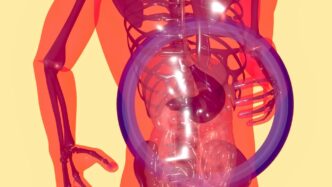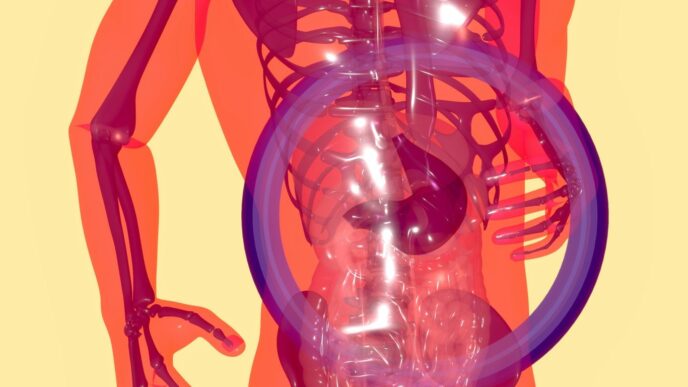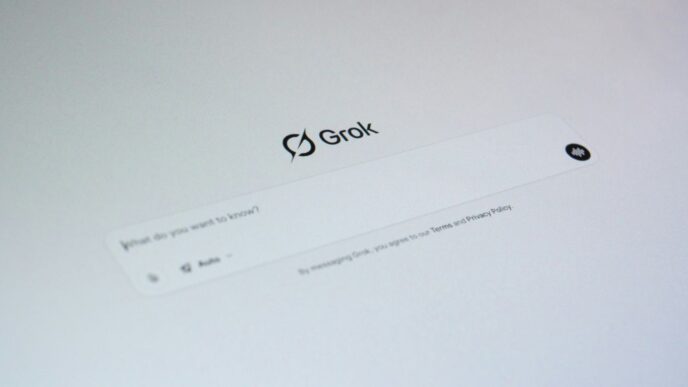It feels like everywhere you look these days, there’s talk about AI. And in the medical world, it’s no different. Doctors and researchers are finding new ways to use artificial intelligence to help out, and one big area is figuring out all those confusing medical abbreviations. You know, the ones you see in your medical records that look like random letters? Well, AI is stepping in to help make sense of them, which is pretty cool when you think about it. This is especially important now that more patients can see their own health notes online. Making sure everyone can understand what’s written is a big deal.
Key Takeaways
- Patients often struggle to understand the medical abbreviations found in their health records, which can lead to confusion.
- New laws are making patient medical notes more accessible, making it vital to simplify the language, including abbreviations.
- AI, particularly through Natural Language Processing (NLP), can help translate these common medical abbreviations into plain language.
- Some medical abbreviations have multiple meanings, creating ambiguity that AI can help resolve by looking at the context.
- AI tools are being developed to automate the process of replacing confusing abbreviations, making medical information clearer for both patients and doctors.
Understanding Medical Abbreviations: The AI Advantage

The Challenge of Medical Jargon
Doctors and nurses use a lot of shorthand, right? It’s like a secret code. Think about it: "Pt c/o SOB, denies CP, will RTC x 1 wk." What does that even mean to someone not in the medical field? It’s a big hurdle for patients trying to understand their own health. This medical jargon, especially the abbreviations, can make patient education tough and lead to confusion. It’s a long-standing problem in healthcare communication.
Why AI is Essential for Decoding Abbreviations
This is where artificial intelligence really starts to shine. Trying to manually keep track of every single medical abbreviation and its possible meanings is a massive task. Some abbreviations can even mean different things depending on the context. For example, ‘RA’ could mean Rheumatoid Arthritis or Right Atrium. AI systems, particularly those using Natural Language Processing (NLP), can sift through vast amounts of medical text to identify these abbreviations and figure out their most likely meaning based on the surrounding words. This helps make sense of complex medical records much faster than a human could.
Improving Patient Comprehension with AI
When AI can accurately translate these abbreviations, it opens up a world of possibilities for better patient understanding. Imagine a doctor using a tool that automatically converts a clinical note filled with shorthand into plain English for the patient. This could lead to:
- More informed patients who better understand their conditions and treatment plans.
- Fewer misunderstandings and follow-up questions due to unclear medical terms.
- Increased patient engagement in their own healthcare journey.
It’s about bridging the communication gap and making healthcare information more accessible to everyone.
Key AI Technologies for Abbreviation Disambiguation
So, how exactly does AI figure out what all these shorthand medical terms mean? It’s not magic, though it can feel like it sometimes. The real workhorses here are a couple of big AI concepts: Natural Language Processing (NLP) and Machine Learning (ML).
Natural Language Processing (NLP) in Medicine
Think of NLP as teaching computers to understand human language, just like we do. In medicine, this is a huge deal because medical records are full of text – doctor’s notes, patient histories, lab reports. NLP helps AI systems read and interpret this text. It breaks down sentences, identifies words, and tries to grasp the meaning. For abbreviations, NLP is the first step. It spots the shorthand, like ‘SOB’ or ‘MI’, and flags them for further analysis. Without NLP, AI wouldn’t even know where to start looking for these abbreviations.
Machine Learning Models for Abbreviation Expansion
Once NLP finds an abbreviation, Machine Learning models come into play to figure out what it stands for. These models are trained on massive amounts of medical text where abbreviations have already been correctly identified and expanded. They learn patterns and associations. For example, if a model sees ‘MI’ frequently appearing near words like ‘heart attack’ or ‘myocardial infarction’, it starts to learn that ‘MI’ likely means one of those. Different ML approaches exist:
- Rule-based systems: These use pre-defined rules and dictionaries. They’re straightforward but can miss new or unusual abbreviations.
- Statistical models: These look at the probability of an abbreviation meaning something based on how often it appears with certain words in a large dataset. They’re better than rule-based systems but still have limits.
- Deep Learning models: These are the most advanced. They use complex neural networks to learn intricate relationships in the data. Models like T5 (Text-to-Text Transfer Transformer) are particularly good at this. They can handle abbreviations in a more flexible way, even figuring out the meaning based on the surrounding sentence structure. Some studies show these advanced models achieving high accuracy, like over 95% in certain tests.
Transformer Models and Elicitive Inference
Transformer models, like the T5 mentioned earlier, are a type of deep learning architecture that has really changed the game for NLP. They are really good at understanding context. Unlike older models that processed text word-by-word, transformers can look at the whole sentence (or even longer passages) at once. This is super helpful for abbreviations because the meaning often depends heavily on the words around it. For instance, ‘BP’ could mean ‘blood pressure’ or ‘bronchopulmonary’. A transformer model can use the rest of the sentence to figure out which one is correct. Elicitive inference is a technique that works with these models. It’s a way to make sure the AI doesn’t just guess an expansion but actively ‘draws out’ or infers the most likely meaning from the context, even if the abbreviation isn’t in a standard dictionary. This helps in detecting and expanding abbreviations more accurately, especially in complex or unusual medical notes.
Navigating Ambiguous Medical Terms
Medical notes are full of shorthand, and sometimes, the same abbreviation can mean totally different things. This is a big headache, not just for doctors trying to read notes from different departments, but especially for patients who are now getting direct access to their own records. It’s like trying to read a secret code, and if you get it wrong, it could lead to some serious confusion.
The Problem of Dual-Usage Abbreviations
Think about abbreviations like "US." In everyday talk, it might mean "United States." But in a hospital, it could stand for "ultrasound." Or "OR" could be "operating room" or "Oregon." This kind of double-meaning is super common in medicine. It’s not just about abbreviations that have multiple medical meanings; it’s also about abbreviations that are also regular English words. This makes simple text-matching tricks, the kind that might work for other kinds of text, pretty unreliable here. The sheer number of these dual-usage terms means we can’t just rely on basic rules to figure out what’s what.
Limitations of Heuristic Approaches
Before AI got really good at this, people tried using "heuristics" – basically, educated guesses or simple rules. For example, they might look for patterns or common phrases. But as we’ve seen, when an abbreviation can be a common word or have several medical meanings, these simple methods fall apart. They might work okay for a few common abbreviations, but they can’t handle the complexity and sheer volume of medical shorthand. It’s like trying to use a screwdriver to hammer a nail; it’s the wrong tool for the job when things get complicated.
AI’s Role in Resolving Ambiguity
This is where AI really shines. Instead of simple rules, AI models can look at the context around an abbreviation. They learn from massive amounts of medical text to figure out the most likely meaning based on the surrounding words and sentences. Think of it like this:
- Contextual Clues: AI analyzes the words before and after the abbreviation.
- Pattern Recognition: It identifies patterns in how abbreviations are used across thousands of patient records.
- Probabilistic Reasoning: It calculates the probability of each possible meaning and picks the most likely one.
For instance, if an AI sees "patient underwent US for abdominal pain," it’s much more likely to guess "ultrasound" than "United States." This ability to understand context is what makes AI so good at untangling these tricky, ambiguous medical terms, making patient records clearer for everyone.
AI Applications in Clinical Settings
AI is starting to show up in a lot of places in hospitals and clinics, especially in the emergency department (ED). It’s not just about fancy new tech; it’s about making things work better and faster for both patients and the people taking care of them.
Enhancing Emergency Department Operations
The ED is a busy place, and AI can help manage the flow of patients. Think about triage – that’s how doctors decide who needs to be seen first. AI can look at a patient’s information right when they arrive and help decide if they need to be seen sooner or later. This means resources can be used more wisely.
- Faster Triage: AI can analyze initial patient data to assist in assigning triage levels, potentially speeding up the process.
- Resource Allocation: By predicting patient flow and needs, AI can help staff allocate beds and personnel more effectively.
- Predicting Readmissions: AI can identify patients who might be at higher risk of returning to the ED soon after being discharged, allowing for follow-up care.
Real-Time Data Analysis and Interpretation
Doctors and nurses are constantly looking at patient information, like vital signs and notes in their electronic health records (EHRs). AI can sift through all this data much faster than a human can. It can spot patterns that might indicate a patient is getting sicker, even before obvious symptoms show up. This means doctors can step in earlier to help.
For example, AI can:
- Monitor heart rate variability for subtle signs of distress.
- Scan clinical notes to flag potential diagnoses like sepsis or appendicitis.
- Analyze complex data streams to provide a clearer picture of a patient’s condition.
This real-time analysis is a game-changer for critical care.
AI in Medical Imaging and Diagnosis Support
Looking at X-rays, CT scans, and ultrasounds is a big part of diagnosing problems. AI is getting really good at this too. It can help radiologists and other doctors spot things in images that might be hard to see, like tiny fractures or fluid in the lungs. It’s like having an extra pair of very sharp eyes looking at the scans. This doesn’t replace the doctor, but it gives them more information to make a better diagnosis.
The Future of AI in Medical Documentation

So, what’s next for AI in how we write down all that medical stuff? It’s pretty exciting, honestly. We’re looking at a future where AI doesn’t just help us write notes faster, but also makes them way clearer for everyone, especially patients.
Automating Abbreviation Replacement
Think about it: doctors and nurses use so many abbreviations. It’s like a secret code sometimes! AI is getting really good at spotting these and swapping them out for the full, plain English version. This means fewer misunderstandings and a much smoother read for anyone looking at a patient’s chart, whether that’s another doctor, a specialist, or even the patient themselves. This isn’t just about making things look pretty; it’s about making sure critical information isn’t missed because someone didn’t know what ‘SOB’ meant in a particular context (shortness of breath, not ‘son of a…’)!
Simplifying Medical Information for Patients
This is a big one. Medical jargon can be super intimidating. AI is starting to translate those complex clinical notes into language that patients can actually understand. Imagine getting a summary of your visit that explains your diagnosis and treatment plan without making you feel like you need a medical degree. This could really help people feel more in control of their health.
The Evolving Landscape of AI in Healthcare
The way AI is used in healthcare documentation is changing fast. We’re moving beyond just basic note-taking. AI is starting to help with:
- Summarizing long patient histories: Pulling out the most important bits quickly.
- Identifying potential gaps in documentation: Flagging if something important seems to be missing.
- Improving data quality for research: Making sure the information collected is accurate and consistent.
- Assisting with coding and billing: Helping to make sure the right codes are assigned based on the notes.
It’s not about replacing doctors or nurses, not at all. It’s about giving them tools to spend less time typing and more time actually caring for people. The goal is to make the whole system work better, from the doctor’s office to the patient’s home.
Wrapping It Up
So, we’ve gone through a bunch of those tricky medical abbreviations. It can feel like learning a new language sometimes, right? But knowing what these terms mean, especially when you’re looking at your own health info, is a big deal. It’s not about becoming a doctor overnight, but just having a clearer picture. Hopefully, this guide has made things a little less confusing and given you more confidence when you see those letters pop up in your medical notes. Keep this handy, and don’t hesitate to ask your healthcare team if anything still seems unclear. Understanding your health is the first step to taking good care of yourself.














